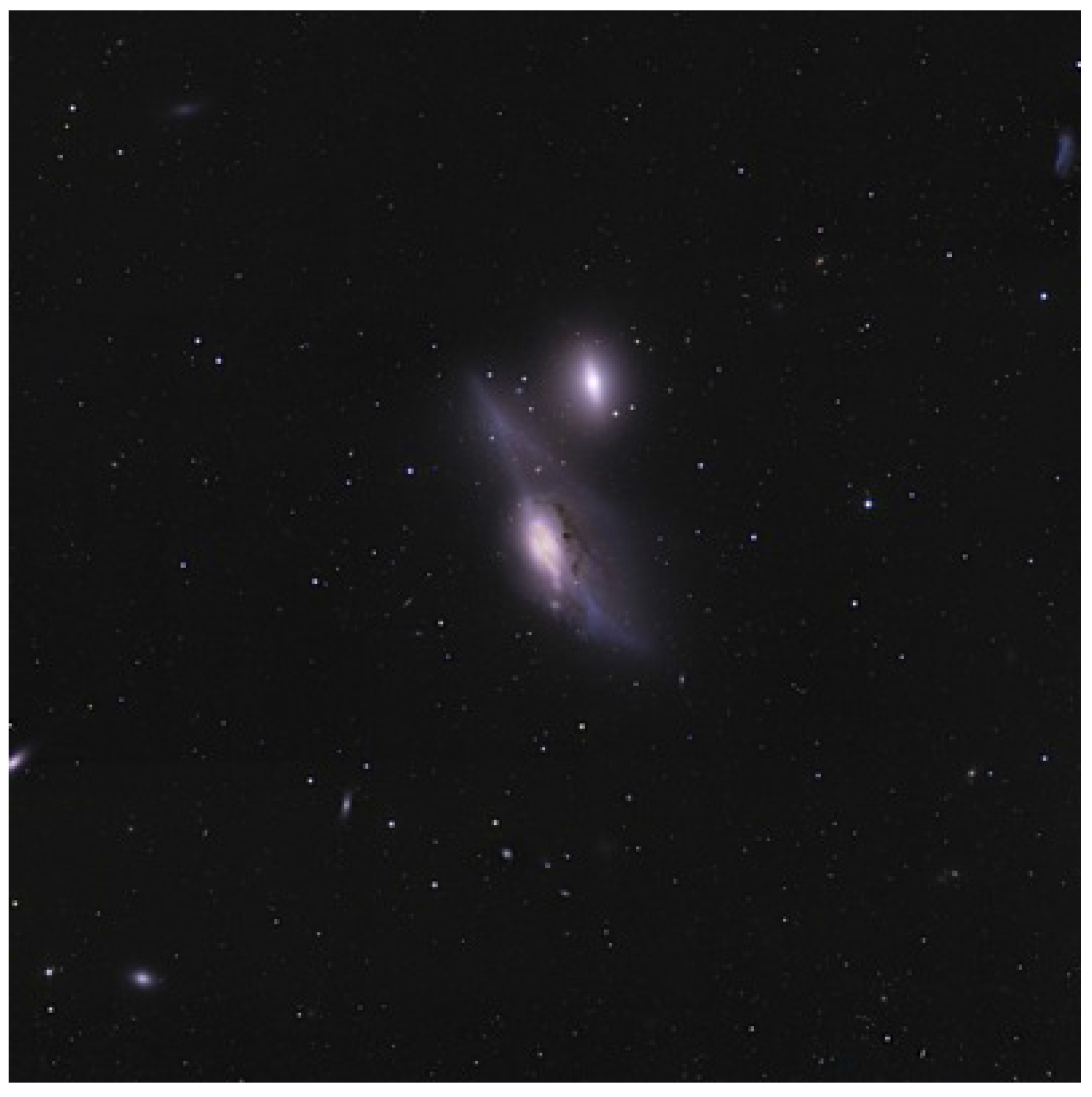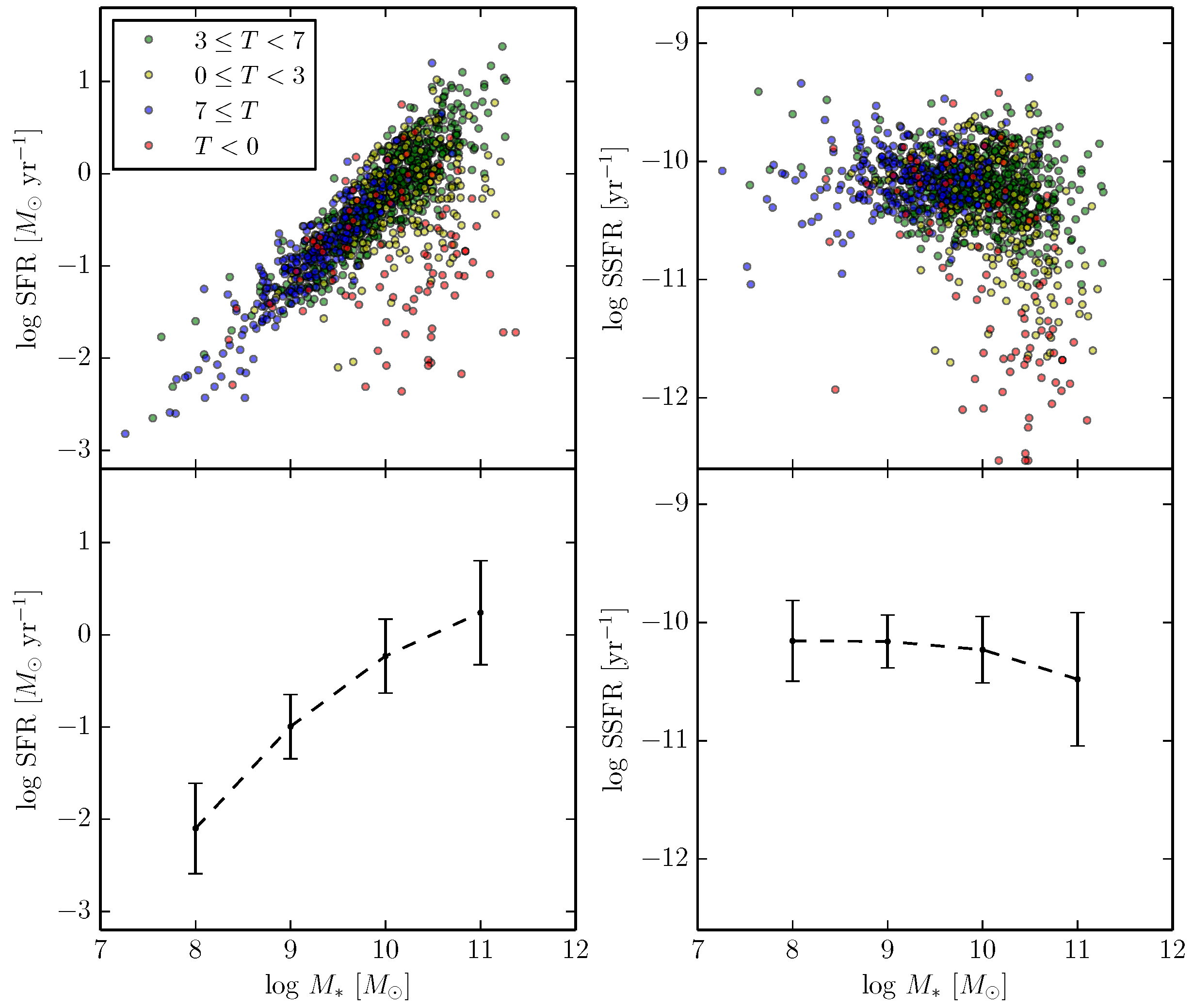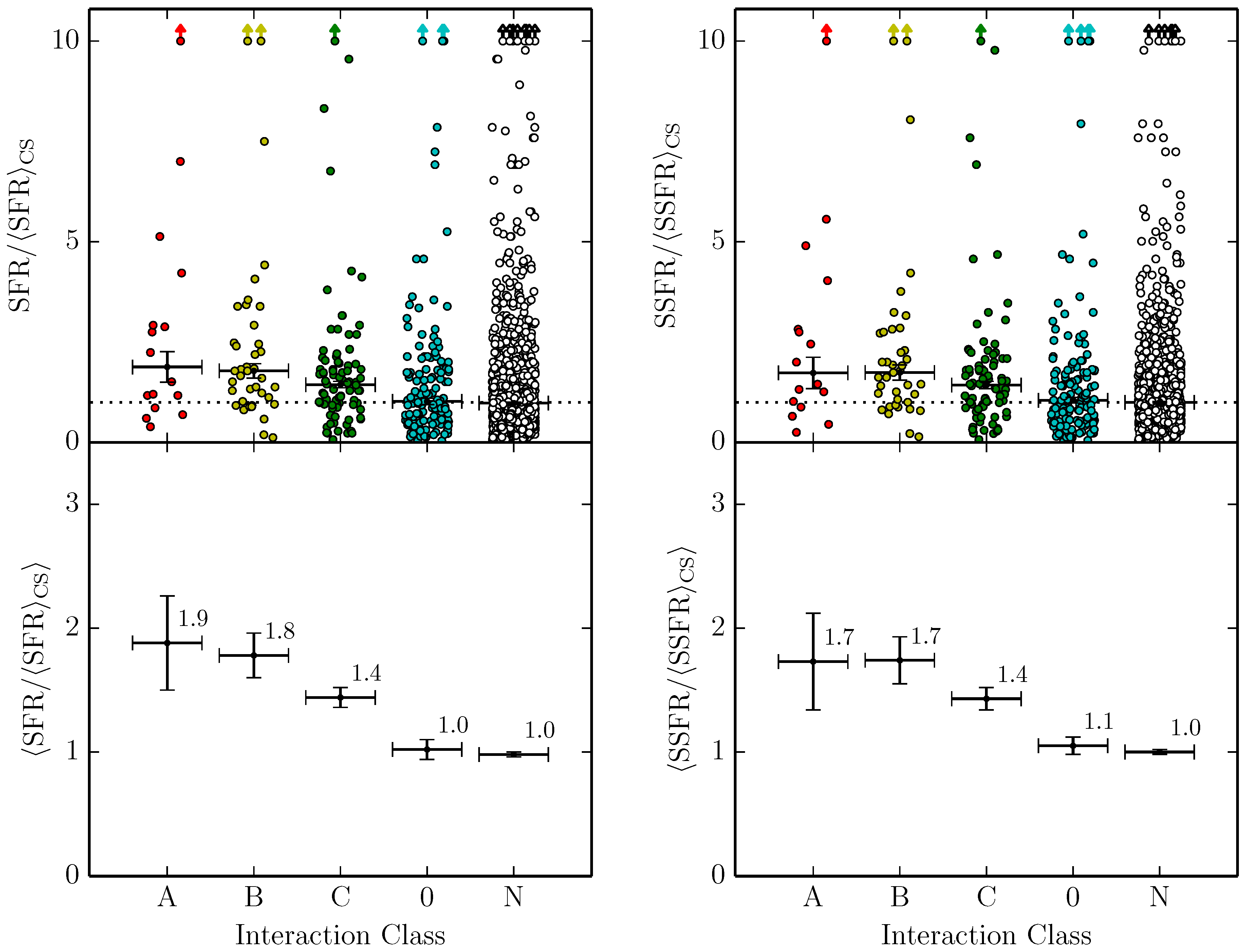Interactions, Starbursts, and Star Formation
Abstract
:1. Introduction
2. Data and Analysis


3. Results

3.1. Extreme Star Formation Is Not Limited to Interacting Galaxies
3.2. Many Interacting Galaxies Do Not Have Enhanced Star Formation at All
3.3. Interactions Do Increase the (S)SFR, but Not by Much
3.4. Stronger Interactions Induce More Star Formation
3.5. Effective Control Sample Technique
4. Conclusions
Acknowledgments
Author Contributions
Conflicts of Interest
References
- Barnes, J.E.; Hernquist, L.E. Fueling starburst galaxies with gas-rich mergers. Astrophys. J. 1991, 370, L65–L68. [Google Scholar] [CrossRef]
- Joseph, R.D.; Wright, G.S. Recent star formation in interacting galaxies–II. Super starbursts in merging galaxies. Mon. Not. R. Astron. Soc. 1985, 214, 87–95. [Google Scholar] [CrossRef]
- Barrera-Ballesteros, J.K.; Sánchez, S.F.; García-Lorenzo, B.; Falcón-Barroso, J.; Mast, D.; García-Benito, R.; Husemann, B.; van de Ven, G.; Iglesias-Páramo, J.; Rosales-Ortega, F.F.; et al. Central star formation and metallicity in CALIFA interacting galaxies. Astron. Astrophys. 2015, 579, A45. [Google Scholar] [CrossRef]
- Di Matteo, P.; Combes, F.; Melchior, A.-L.; Semelin, B. Star formation efficiency in galaxy interactions and mergers: a statistical study. Astron. Astrophys. 2007, 468, 61–81. [Google Scholar] [CrossRef]
- Ellison, S.L.; Mendel, J.T.; Patton, D.R.; Scudder, J.M. Galaxy pairs in the Sloan Digital Sky Survey–VIII. The observational properties of post-merger galaxies. Mon. Not. R. Astron. Soc. 2013, 435, 3627–3638. [Google Scholar] [CrossRef]
- Hernández-Toledo, H.M.; Avila-Reese, V.; Conselice, C.J.; Puerari, I. The Structural Properties of Isolated Galaxies, Spiral-Spiral Pairs, and Mergers: The Robustness of Galaxy Morphology During Secular Evolution. Astron. J. 2005, 129, 682–697. [Google Scholar] [CrossRef]
- Knapen, J.H.; Cisternas, M.; Querejeta, M. Interacting galaxies in the nearby Universe: only moderate increase of star formation. Mon. Not. R. Astron. Soc. 2015, 454, 1742–1750. [Google Scholar] [CrossRef]
- Knapen, J.H.; James, P.A. The Hα galaxy survey. VIII. Close companions and interactions, and the definition of starbursts. Astrophys. J. 2009, 698, 1437–1455. [Google Scholar] [CrossRef]
- Larson, R.B.; Tinsley, B.M. Star formation rates in normal and peculiar galaxies. Astrophys. J. 1978, 219, 46–59. [Google Scholar] [CrossRef]
- Knapen, J.H.; Cisternas, M. Starbursts Are Preferentially Interacting: Confirmation from the Nearest Galaxies. Astrophys. J. Lett. 2015, 807, L16. [Google Scholar] [CrossRef]
- Sheth, K.; Regan, M.; Hinz, J.L.; Gil de Paz, A.; Menéndez-Delmestre, K.; Muñoz-Mateos, J.C.; Seibert, M.; Kim, T.; Laurikainen, E.; Salo, H.; et al. The Spitzer survey of Stellar structure in galaxies (S 4 G). Publ. Astron. Soc. Pac. 2010, 122, 1397–1414. [Google Scholar] [CrossRef] [Green Version]
- Querejeta, M.; Meidt, S.E.; Schinnerer, E.; Cisternas, M.; Muñoz-Mateos, J.C.; Sheth, K.; Knapen, J.; van de Ven, G.; Norris, M.A.; Peletier, R.; et al. The Spitzer Survey of Stellar Structure in Galaxies (S4G): Precise Stellar Mass Distributions from Automated Dust Correction at 3.6 μm. Astrophys. J. Suppl. Ser. 2015, 219, 5. [Google Scholar] [CrossRef]
- Knapen, J.H.; Erroz-Ferrer, S.; Roa, J.; Bakos, J.; Cisternas, M.; Leaman, R.; Szymanek, N. Optical imaging for the Spitzer Survey of Stellar Structure in Galaxies-Data release and notes on interacting galaxies. Astron. Astrophys. 2014, 569, A91. [Google Scholar] [CrossRef]
© 2015 by the authors; licensee MDPI, Basel, Switzerland. This article is an open access article distributed under the terms and conditions of the Creative Commons Attribution license (http://creativecommons.org/licenses/by/4.0/).
Share and Cite
Knapen, J.H.; Querejeta, M. Interactions, Starbursts, and Star Formation. Galaxies 2015, 3, 220-226. https://doi.org/10.3390/galaxies3040220
Knapen JH, Querejeta M. Interactions, Starbursts, and Star Formation. Galaxies. 2015; 3(4):220-226. https://doi.org/10.3390/galaxies3040220
Chicago/Turabian StyleKnapen, Johan H., and Miguel Querejeta. 2015. "Interactions, Starbursts, and Star Formation" Galaxies 3, no. 4: 220-226. https://doi.org/10.3390/galaxies3040220




